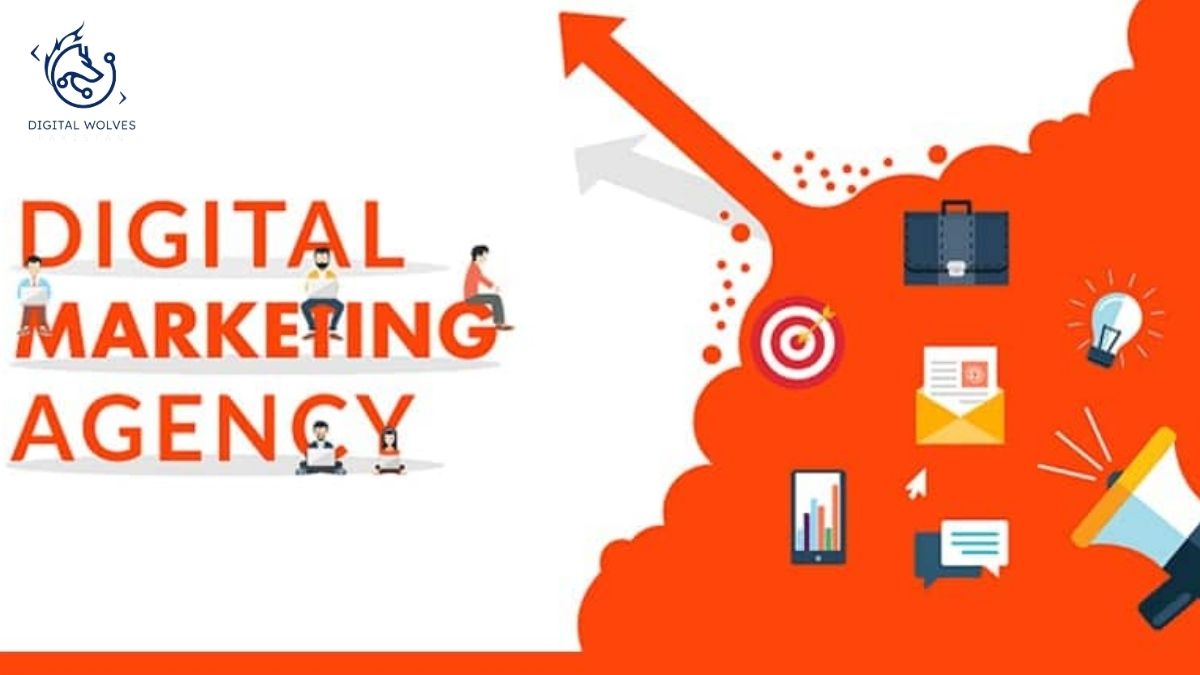Digital Marketing Agency Pricing Guide: How Much Should You Charge?

The fundamental objective of any business owner is to ensure that their company is profitable. In the realm of digital marketing, as in any other industry, competition is tough. That implies you’ll need to offer competitive pricing to attract customers to your agency. However, to keep your digital marketing agency afloat, you must produce a profit. Furthermore, profit is an important motivator for every firm to develop and grow.
Which factors should you use to determine the pricing structure for a Digital Marketing Agency?
This is one of the most difficult questions to answer for anyone beginning a digital agency. As a general rule, the product’s price should cover the cost of the service provided and the overhead expense. You can base your pricing strategy in digital marketing on the cost of the individual services you provide.
However, keep in mind that your digital marketing agency price model can make or destroy you. It can have an impact on anything from who you recruit to how you pitch at your agency. As a result, you must pick a pricing plan that corresponds with your long-term objectives.
Choosing a reasonable cost
Rates for Digital Marketing Agency vary, especially for those who outsource their services. But how can you set pricing that meets customer expectations while also covering your agency’s overhead?
1. What is the cost of running the agency?
Several expenses have an impact on this statistic, including:
Rent, utilities, equipment, maintenance, supplies, and other operating expenditures apply whether you work from home or have a dedicated office.
Also Read: 6 Reasons Why Your Business Is Failing
Expenses of production:
To conduct effective campaigns, Digital Marketing Agency companies must invest in various tools and software. Office productivity software, task management software, CRM, SEO tools, email marketing, social media automation software, and so on are just a few examples.
Employment costs:
In addition to pay, digital firms must factor in benefits, insurance, and bonuses.
Professional fees—from government license fees to corporation taxes to legal fees—running a business comes with its own set of costs. This is something that should never be disregarded.
Additional costs:
Every firm needs additional funds to expand. Digital Marketing Agency must set aside funds to meet variable marketing costs such as advertising, conference fees, directory listing fees, etc. This could also include travel and lodging costs. It may also include loan repayments for others.
- The pricing model for digital marketing agencies that you want to use
You can charge your clients using a variety of pricing schemes as a digital marketer. It’s up to you and the services you’re providing whether you charge your consumers upfront, 50 before 50 after that, or on completion.
Here are a few possibilities:
1. On an hourly basis
This is a great strategy for Digital Marketing Agency who are just getting started and aren’t sure how long a project will take. It’s also the simplest approach to bill your clients, particularly those who request numerous tweaks or revisions.
Fee structure for digital marketing agencies
The crucial thing to remember here is that your hourly pay must be sufficient to keep the Digital Marketing Agencyrunning. However, make sure to warn your clients about how long the project might take, and leave yourself a few extra hours to spare. More crucially, if you wish to scale, you may have to increase digital agency rates or change your pricing plan.
Pros:
Straightforward and straightforward
It’s simple for clients to grasp how to stay on budget.
Long projects are an excellent method to make money.
Cons:
To prove your worth, you must keep track of and document your working hours.
There is no incentive to work more quickly.
2. Project-based learning
Charging a flat price for any job is a straightforward approach to run a Digital Marketing Agency business, especially if you have the necessary expertise and resources.
So, rather than billing for the time you spend, you bill for your knowledge. Have an idea of how many hours your project will take to appropriately price it, whether it’s building a social media ad campaign or a brand-enhancing identity package.
straight-north-SEO-campaign
Pros:
A pricing model that is easy to understand
Allows clients to evaluate the outcomes of modest tasks before making long-term commitments.
Scalability is easier than with an hourly price approach.
Cons:
It’s tough to forecast how long a project will take, which impacts your profit at the end of the day. 3. Retainer model
You can transition to a retainer pricing model once you’ve built a relationship with your clients and can deliver a substantial amount of work each month.
This is where your consumers agree to pay a set amount in advance. Depending on your task, it could be a predetermined amount of time (hours-per-month retainer) or a set number of deliverables every month.
Pros:
Every month, it brings in a consistent income.
The fact that money is paid upfront makes it easier to grow the business.
Clients have a simpler time budgeting and accounting because they know exactly what their monthly expenses are.
It doesn’t matter how long it takes to complete the tasks with monthly deliverables. All you have to do now is deliver them according to the agreed-upon schedule.
Cons:
The model is a little on the pricier side, making it difficult to sell to new clientele.
4. Model that repeats itself
Some digital marketing services, like SEO, are long-term endeavors. You can claim a long-term partnership by giving flexible or discounted annual Digital Marketing Agency price options.
Pros:
Attract clients that are looking for additional services.
Long-term contracts provide a reliable source of revenue.
Cons:
Annual rates that are discounted can reduce company margins.
5. Performance-based compensation
Consider switching to a performance-based pricing model for your Digital Marketing Agency if you’ve worked hard to establish a reputation for your company and know you can deliver great outcomes. Of course, you’ll need the appropriate measurements to back up your efforts.
You may, for example, agree on a percentage of all sales the firm closes.
Pros:
Scalability is simple.
Metrics can demonstrate your positive impact on a client’s business.
Cons:
You will not get compensated if you are unable to provide the desired results.
6. A value-based approach
The value determines the Value-based pricing you add to your client’s business and the solutions you offer to their present issues.
Pros:
Scalability is simple.
Cons:
- Clients are aware of the value they will receive.
- Providing consistent value all of the time can be difficult.
- Specific goals may not be fulfilled despite the greatest efforts.
- It can be a difficult sale.
7. Individualized price
Digital Marketing Agency is a constantly changing field. You might be able to develop a price structure that offers services tailored to your client’s requirements.
Pros:
- Allows you to assess individual clients and customize your offerings to meet their needs.
- Clients can only pay for the services they require.
- Increase your agency’s worth by giving clients more options.
- Your services are quite affordable.
- Implement hourly rates and recurring income strategies to accommodate everyone.
Cons:
Clients might bargain for various services, lowering the profit margin 3. The services you plan to offer
When it comes to digital marketing agencies, those just starting should look at ways to expand their business. This could entail thinking about providing a variety of marketing services. You can connect your services with strong demand by creating a customer-oriented digital agency business strategy.
You’ll also be able to price them appropriately so that you stay profitable at all times. The calculation is straightforward: cost + markup equals price. The majority of agencies charge a 20% to 50% markup. But how do you charge for specialized services like social media management, SEO, and PPC, for example? You’ll need to know the fees and responsibilities of each service. And, because each one is unique, let’s delve a little deeper.
1. Agency for Social Media Marketing Pricing
SMM assists organizations in connecting with customers, creating a brand community, leverage brand awareness, improve brand loyalty, increase customer happiness, and increase sales.
So you’ve got a big job ahead of you, assessing the target audience and then devising and implementing a strategy that works for them. It also entails ad management, which is one of the most crucial SMM services.
Social media management entails a wide range of responsibilities. You must be aware of any additional tools or personnel that may be required to complete them. A creative director, strategist, or video editor, for example, can elevate the level of services you offer.
So, while quoting a price, consider the cost, time, and value of your services, which should include:
- Management of the community
- Identifying the right target market
- Creating a client persona-specific campaign plan
- Recognize the company’s objectives.
- Make contact with your customers.
- Respond to comments as soon as possible and promptly.
- Material creation Create content that is tailored to the preferences of your customers.
- Set up a content calendar.
- Examine your rivals
- Conversations should be kept an eye on.
- Keep an eye out for related hashtags and influencers.
- Join relevant conversations to broaden your reach.
- Be informed of trending target terms on various social media platforms.
- Collaboration with influencers
- Keep track of companies, fans, goods, and issues that fit the brand’s image.
- Analytics can be used to filter out clickbait.
- SMM campaigns’ metrics should be monitored, analyzed, optimized, and reported on the metrics that matter the most.
2. Search Engine Optimization Management
From content to keywords to picture metadata, there’s a lot that goes into SEO administration. However, there are three basic types of SEO:
Local SEO explains how local businesses might appear in searches for “near me.”
On-Page SEO ensures that all website components, including pictures, keywords, URLs, page speed, mobile-friendliness, linking strategy, and user experience, are optimized for search engines.
Off-Page SEO refers to efforts that take place outside of your website to improve your search engine ranking, such as external links, forums, influencer outreach, and so on.
SEO is a time-consuming procedure that necessitates ongoing monitoring and upkeep. SEO focuses on ranking and traffic in addition to content and keywords. So, how do you price SEO services as a recurring service? Many people choose project-based pricing or a recurring billing approach.
3. Pay-Per-Click
PPC is a terrific approach to get your website in front of people, much like advertising. As a result, many people believe Pay-Per-Click marketing to be paid SEO. The majority of it is now done through AdWords. Your role is to strategize, set up, manage, and report on marketing initiatives on this platform. Progress is tracked weekly, monthly, or quarterly, and campaigns are adjusted as needed.
When it comes to PPC services, there are various price models available, ranging from hourly fees to flat rates to a monthly retainer plan. Some clients bundle PPC services with other Digital Marketing Agency needs, while others charge a portion of the ad spend. Finally, you must choose a pricing structure that is acceptable to both you and your client.



